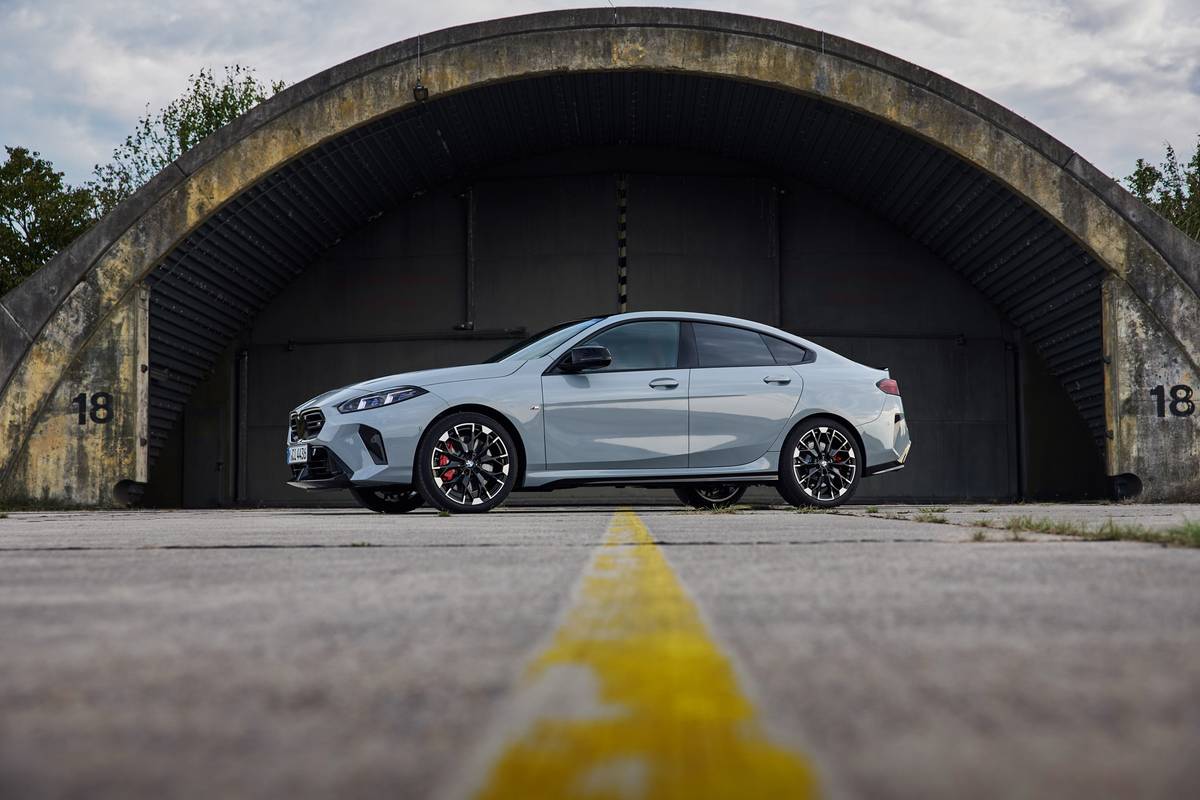The Morning Call and Mcall.com's view
Volkswagen, a company that made its name on small economy cars, is still offering those basic economy cars (or as basic as any car gets these days) but it is also developing quite a reputation as the builder of some interesting road machines.
First there was the Rabbit GTI, a car with a souped-up engine, beefed-up suspension, that looked like a box but acted like a sports car. Then came the 16-valve Scirocco, Volkswagen’s first real sports coupe. The (Golf) GTI later got the 16-valve engine, making it even hotter than before. In the meantime, VW’s popular Jetta sedan also was available in a sportier version.
However it wasn’t until just recently that the Jetta also became available with the 16-valve engine. The end result is the Jetta GLI 16V, a German sports sedan that will surely give the more expensive competition a run for its money.
The test car (a bright red four-door provided by Lehigh Valley Volkswagen, 1346 Lehigh St., Allentown) acted as sharp as it looked. Here is a car that can easily qualify as an affordable family sports sedan. There’s room for the kids and there’s plenty of room for luggage.
First off, though, let’s discuss the engine since it played such a big role in the upgrading of performance at VW. The 16-valve engine (four valves for each of its four-cylinders) only has been on the market less than a year and has already proved itself on the race track by powering ”Showroom Stock” Sciroccos and GTIs to victories in SCCA and IMSA endurance races.
The multi-port fuel-injection twin overhead cam engine measures 109 cubic inches (1.8 liter) and produces 123 horsepower at 5,800 rpm. Now 5,800 rpm is a lot of revs and at first may seem somewhat unrealistic. One of the characteristics of four-valve-per-cylinder engines is the ability to turn over high revolutions per minute. In fact, the VW 16V doesn’t red line until a very high 6,800 rpm. So, there’s a long way to go before it runs out of steam.
Performance, as should be expected is good. Manipulate the five-speed manual transmission properly and the GLI will go from zero-to-60 in less than nine seconds. Like many other German cars, it has plenty of speed at the top end. VW claims a top of 121 mph, certainly a rather moot point in a country loaded with speed traps and radar. But the Germans like it high.
Rapid acceleration brings on quite a bit of torque steer. This is not exactly an unknown factor in front-drive cars, especially performance front- drive cars, but it is somewhat pronounced in the GLI. So, keep alert and hold onto that steering wheel on fast takeoffs.
The 16V engine is not only impressive in performance but impressive to look at. There are a number of cast aluminum components such as a finned camshaft cover, tuned intake runners and a lettered intake manifold.
Essentially, though, a small displacement engine should produce good fuel mileage. So, again as should be expected, fuel mileage is good for the GLI. The test car produced 20 miles per gallon for city driving and 31 mpg over the highway. VW claims its engine management system, which uses digital ignition with knock sensor control, allows for the use of unleaded regular fuel. The test car was filled with both unleaded regular and unleaded premium without any noticeable difference in performance. Something like this would be difficult to detect over a short period.
The 16V engine is not the only thing mechanically different from the previous GLI with its eight-valve, 102 horsepower engine. The new model has a modified and strengthened five-speed close-ratio transmission, stronger clutch, revised fifth gear ration and revalved front MacPherson struts. The rear spring rates and shock valving also have been revised to match the extra performance of the 16V.
The most visible difference of the GLI 16V from the regular Jetta are the ”16V” nameplates ont e front grille and below the right taillight, a sharply angled roof antenna, 6J- by 14-inch ”teardrop” light alloy wheels, body-color decklid spoiler and twin tailpipes. Both, however, share the same basic dimensions which include a wheelbase of 97.3 inches, length, 171.7 inches; width, 66.1 inches; height, 55.7 inches, and curb weight of 2,350 pounds.
Interior space is well laid out and decently roomy. Of course it is a compact, so it should have some room. The two front seats are large enough and have enough space to accommodate just about all drivers and passengers. Even with the front seats fully extended, there is still leg room in the back for adults. The biggest surprise, as far as room goes, is the trunk. Rated at 17 cubic feet, it even looks larger. This is a real slam-the-decklid trunk. An interesting option on the test car was a ski sack. Like the name implies, this is a sack that fits into the rear seat center armrest and allows long objects, such as skis, to be fitted in through the trunk. When not in use, it is not in sight. I had seen the ski sack several years ago on an Audi and thought it was a great idea then. I thought everyone would be copying this idea but for some reason it is just confined to a couple of German models.
A rather high-class feature on the GLI 16V are Recaro seats. (The GLI 16V is the first VW in America to have factory-installed Recaro seats as standard equipment). These fully reclining sport seats feature electric height adjustment and large side bolsters for lateral support. The Recaro seats will not only hold you in place in tight cornering but also keep you in place when you try to get out. If you are tall, there is a little bit of a problem with the steering wheel, which is not adjustable. There is very little room between the high bolsters and the low steering wheel to slide in and out. A rather minor inconvenience that requires some agility on the part of the driver. The seats, though, are rather handsomely done up in a muted striped gray velour fabric on the inserts.
The instrument panel is nicely laid out with large speedometer and tachometer in plain view for the driver. A little disappointing, though, was the lack of instruments. There are no oil pressure or voltage gauges, items one usually expects to find on a performance car. Perhaps to make up for this, VW included a Multi-Function Computer that, at the press of a button located at the tip of the windshield wiper stalk, displays oil or ambient temperatures, elapsed time of trip, miles traveled, average speed, average miles per gallon and time of day in a display between the speedometer and tach. And if you are really into this type of stuff, a two-position memory switch, also on the wiper stalk, allows the driver to keep total trip information plus data on trip segments. Of course, it is not really necessary but it can pass away some idle moments on the road.
Base price on the GLI 16V is $13,725. This includes all of the performance items plus tinted glass, dual remote-control outside mirrors, illuminated passenger sunvisor mirror, fold-down rear center armrest with built-in cup holder, intermittent wipers, rear window defogger, power steering and four- wheel disc brakes. A very reasonable price for all that is offered. The test car had a final price of $15,960, including options totaling $1,915 and a destination charge of $320. The four options are: air conditioning, $795; 6- speaker AM/FM stereo cassette radio, $675; sliding sunroof with air deflector, $360, and ski/storage sack, $85.
All VW models have a 2-year limited warranty which covers the entire vehicle, except tires for two years with no mileage restriction. There is also a six-year protection against corrosion perforation, again with no mileage limit.
Latest news



